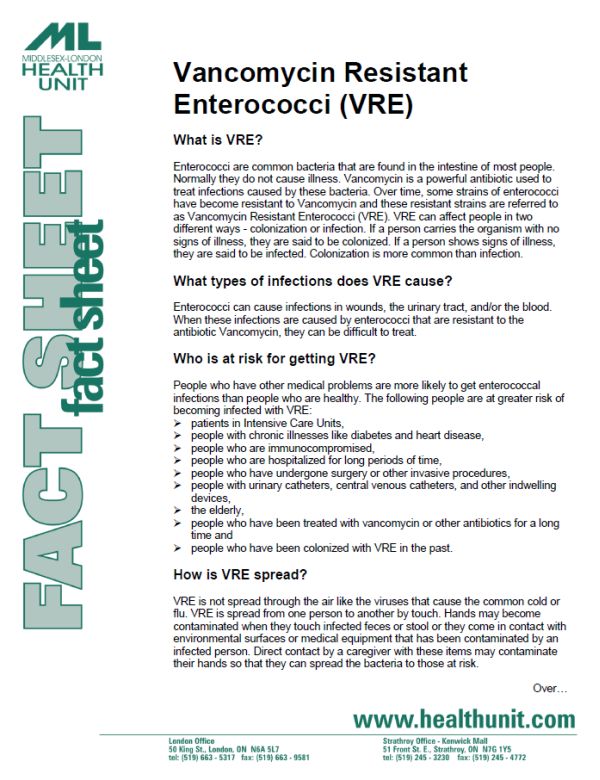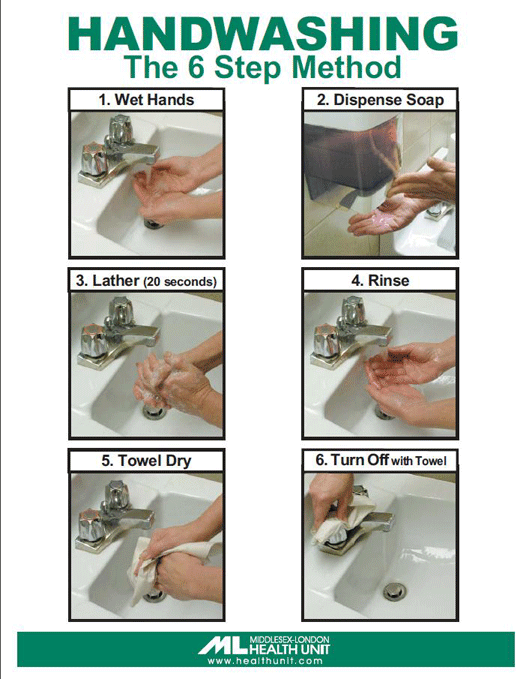Contact Us
For more information, please contact the Infectious Disease Control Team:
- 519-663-5317 Ext. 2330
What is VRE? Enterococci are common bacteria that are found in the intestine of most people. Normally they do not cause illness. Vancomycin is a powerful antibiotic used to treat infections caused by these bacteria. Over time, some strains of enterococci have become resistant to Vancomycin and these resistant strains are referred to as Vancomycin Resistant Enterococci (VRE).
 Vancoymycin Resistant Enterococci (VRE) - Fact Sheet (PDF 201KB)
Vancoymycin Resistant Enterococci (VRE) - Fact Sheet (PDF 201KB)For more information, please contact the Infectious Disease Control Team:
Enterococci can cause infections in wounds, the urinary tract, and/or the blood. When these infections are caused by enterococci that are resistant to the antibiotic Vancomycin, they can be difficult to treat.
People who have other medical problems are more likely to get enterococcal infections than people who are healthy. The following people are at greater risk of becoming infected with VRE:
VRE is not spread through the air like the viruses that cause the common cold or flu. VRE is spread from one person to another by touch. Hands may become contaminated when they touch infected feces or stool or they come in contact with environmental surfaces or medical equipment that has been contaminated by an infected person. Direct contact by a caregiver with these items may contaminate their hands so that they can spread the bacteria to those at risk.
Healthy people who carry VRE may carry it for weeks or even years and may get rid of the bacteria without treatment. If you have been ill with VRE in the past, the infection can return again if you are treated with antibiotics.
It is very important to prevent the spread of VRE from one person to another. Uncontrollable diarrhea, poor personal hygiene and inadequate cleaning increase the likelihood of spreading the bacteria between people. If you have VRE, or someone you are caring for has VRE, it is important to follow the following precautions:
Careful handwashing is the single most effective way to prevent the spread of VRE. The use of soap in pump dispensers to wash hands followed by drying with paper towels and the use of waterless hand sanitizer gels are very effective in removing bacteria from your hands and preventing spread of VRE to others.
 The 6 Step Method of Handwashing (PDF 96KB)
The 6 Step Method of Handwashing (PDF 96KB)